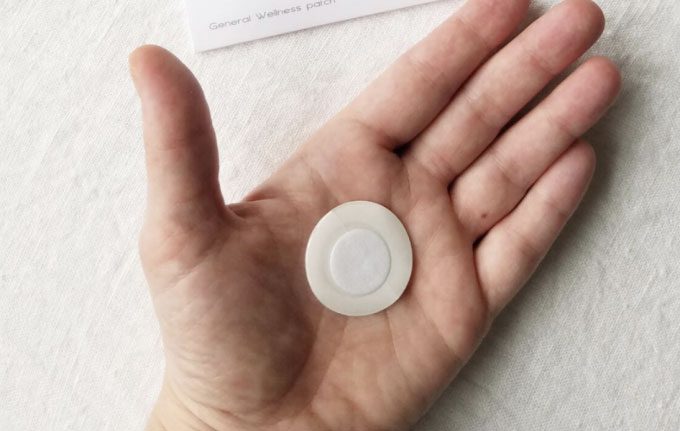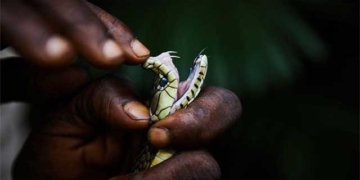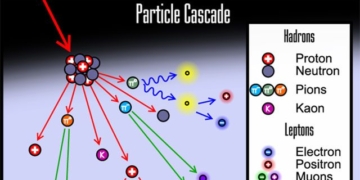The stem cell patches are advertised to help with “detoxification and healing,” but doctors warn that this is a fraudulent practice that exploits people’s trust, and individuals should be cautious to avoid “wasting money.”
As the Lunar New Year approaches, many people are seeking detox methods to feel lighter and healthier for the new year. Among these, stem cell activation patches have garnered significant attention, priced between 3 to 5 million VND for a pack of 30 patches.
According to a seller on TikTok, thanks to proprietary light technology, this patch can activate stem cells to transform into “new, youthful, healthy cells that replace damaged and aging cells”, thereby helping the body heal naturally.
For the elderly, the patch is claimed to treat diabetes, cervical spine degeneration, migraines, joint pain, sinusitis, allergies, gout, and more. For younger individuals, the patch supposedly enhances skin beauty, reduces hair loss, mitigates greying, rejuvenates and tightens the skin, and boosts immunity.
The recommended usage is to apply the patch for 12 hours each morning, once a day, on a dry area without open wounds. “After applying, you should drink plenty of water to aid the detox process. However, you must wait three to six months to see results,” shared a seller in a Facebook group.
Dr. Tran Ngoc Luu Phuong, a specialist in Gastroenterology and Hepatology at Nguyen Tri Phuong Hospital (Ho Chi Minh City), stated that there is currently no scientific basis or research validating that a single patch can activate stem cells for detoxification as claimed. This is a scientifically unfounded approach, violating medical ethics and exploiting public trust. Currently, the U.S. Food and Drug Administration (FDA) has approved stem cells only for treating blood cancers and bone marrow transplants. This product has not been recognized by the FDA as a medical device for health care as advertised online.
“Thus, the effectiveness of this patch is unfounded,” Dr. Phuong added, stating that stem cells are derived from the umbilical cord and must be injected directly into the bloodstream, rather than applied to the body as a patch. The idea that a single patch can treat numerous ailments is a subjective opinion lacking foundation. In reality, each illness has a different mechanism and requires appropriate treatment methods.
Moreover, the human body already has detoxification mechanisms through sweating, urination, breathing, exercise, and physical activity. “People should not misuse the concept of ‘detoxification,’ leading to wasted money,” the doctor advised.

Stem cell activation patches are widely sold online. (Photo: Niceredov.life).
Similarly, Dr. Nguyen Van Long, Deputy Director of the Stem Cell and Genetic Center at the Postal Hospital (Hanoi), noted that many people are misusing the term stem cell.
Stem cells are a living entity, packaged in sterile containers, then brought to the laboratory, where they are handled in a clean and sterile environment. Here, doctors check if this biological product is contaminated with bacteria, fungi, or toxins, and assess the quality of the stem cells before deciding to inject them into a patient. There are various types, including embryonic stem cells, adult stem cells, and hematopoietic stem cells from bone marrow. Among these, umbilical cord stem cells have the highest application potential due to their availability, safety, non-invasive nature, and ethical compliance.
Recently, many serious diseases related to the respiratory system, certain cancers such as blood cancer, and musculoskeletal disorders have successfully utilized stem cells for treatment. Stem cells also open up many opportunities in treating diseases previously deemed incurable, such as cirrhosis, diabetes, and stroke. Preliminary evaluations in treated patients have noted highly promising results.
However, real stem cells require strict standards in collection, processing, storage, and transportation of samples. Furthermore, the cost of storing stem cells can be very high, reaching tens of millions of VND. Currently, there are very few facilities in Vietnam qualified to store and process stem cells, and biological products containing stem cells cannot be stored in jars, tubes, or patches for public sale, as noted by Dr. Long.
The Ministry of Health currently permits the use of stem cells to treat certain blood disorders such as bone marrow failure, blood cancers, and diseases requiring bone marrow transplants, as well as joint degeneration and chronic obstructive pulmonary disease (COPD). The Drug Administration does not authorize products or cosmetics made from human body cells. Additionally, stem cells can only be used in licensed medical facilities.
Doctors advise that products may be counterfeit regarding components and origin, posing safety risks when used. Relying on stem cells may disrupt or delay a patient’s recovery process, worsening their condition or losing treatment opportunities. Other risks include drug allergies or treatment complications that may harm health or even lead to death. The public should be vigilant, clearly understand the origin of products, or consult healthcare professionals before injecting or applying any products to their body.




















































